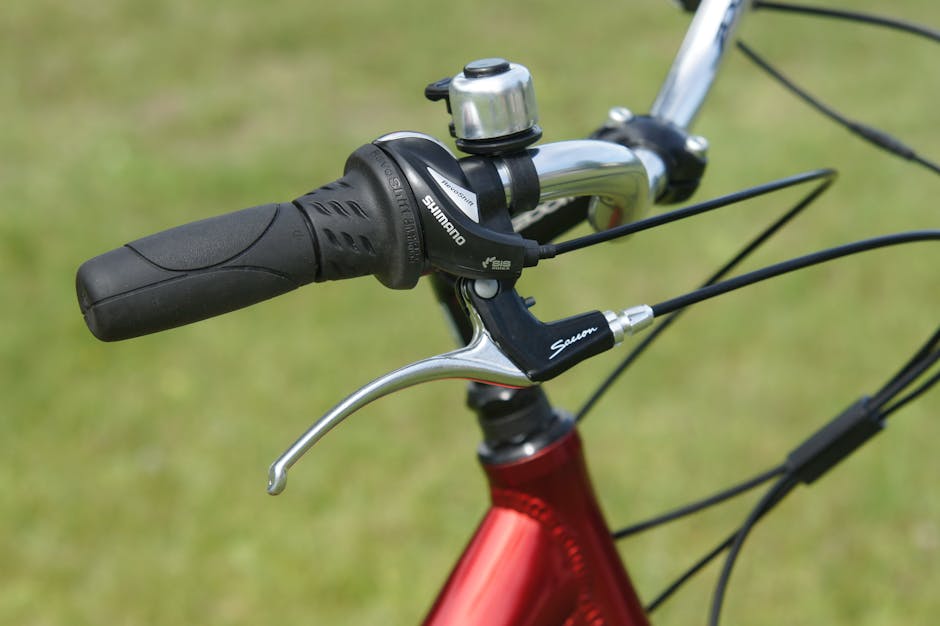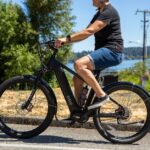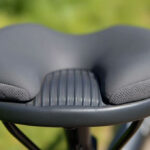Why eBike Brake Levers Are Important
If you’re looking for information on eBike brake lever, you’ve come to the right place. Whether you’re an avid eBike rider or a newcomer, understanding your bike’s brake system is crucial for safe and enjoyable riding. Here’s what you need to know:
Quick Facts:
- eBike brake lever is essential for stopping your eBike safely.
- Regular maintenance and timely replacements ensure optimal performance.
- Properly functioning brake levers improve overall safety.
Your eBike brake levers are more than just simple hand controls; they’re a lifeline for safety and performance. They play a vital role in your riding experience, ensuring you can stop efficiently and confidently. Over time, wear and tear can impact their effectiveness, making regular maintenance and timely replacement crucial.
We’ll guide you through everything you need to know about eBike brake levers. From understanding the different types to recognizing the signs that it’s time for a replacement, we’ve got you covered.
We’ll also share a step-by-step guide on how to replace your brake levers, ensuring you can enjoy both safety and fun on your eBike.

Common eBike brake lever vocab:
Understanding eBike Brake Levers
Types of eBike Brake Levers
When it comes to eBike brake levers, there are several types to choose from. Each type has its own advantages and is suited for different riding styles and brake systems.
1. Mechanical Brake Levers
- Mechanical brake levers use a cable to pull the brake caliper, which then clamps the brake pads onto the wheel.
- They are straightforward and easy to maintain.
- Compatible with both rim brakes and disc brakes.
2. Hydraulic Brake Levers
- Hydraulic brake levers use fluid to transfer force from the lever to the brake caliper.
- They offer stronger and more consistent braking power.
- More complex but provide superior performance, especially for mountain biking.
3. Integrated Levers
- Combine brake levers with other controls, such as gear shifters.
- Offer a cleaner handlebar setup and are often found on high-end eBikes.
4. TripWire Product
- A specialized type of brake lever that includes an electronic cut-off switch.
- Instantly cuts power to the motor when the brake lever is pulled, enhancing safety.
How eBike Brake Levers Work
Understanding how eBike brake levers work can help you troubleshoot issues and maintain your bike better.
1. Lever Mechanism
- When you pull the brake lever, it activates either a cable (mechanical) or hydraulic fluid (hydraulic).
- This action transfers force to the brake calipers.
2. Brake Calipers
- The calipers hold the brake pads and are responsible for squeezing them against the wheel.
- In mechanical systems, the cable pulls the caliper.
- In hydraulic systems, the fluid pressure pushes the pistons in the caliper.
3. Pistons
- Located inside the brake calipers.
- In hydraulic systems, pistons are pushed by fluid pressure to move the brake pads.
4. Brake Pads
- The pads create friction against the wheel or rotor to slow down the bike.
- They can be made of various materials like rubber (for rim brakes) or metal/ceramic (for disc brakes).
5. Friction and Stopping Force
- The friction between the brake pads and the wheel or rotor is what stops the bike.
- More friction means better stopping power.
- Regularly check and replace worn brake pads to ensure optimal friction and stopping force.

6. Rim Brakes vs. Disc Brakes
- Rim Brakes: The pads clamp onto the wheel rim. They are lighter and simpler but less effective in wet conditions.
- Disc Brakes: The pads clamp onto a rotor attached to the wheel hub. They offer better performance, especially in adverse conditions.
Quick Tip: Always test your brake levers before each ride to ensure they are responsive and effective. Regular maintenance can prevent many common issues.
Understanding your eBike brake lever system is essential for safe and enjoyable riding. Whether you prefer the simplicity of mechanical levers or the power of hydraulic ones, knowing how they work will help you keep your bike in top shape.
Signs You Need to Replace Your eBike Brake Lever
Maintaining your eBike brake lever is crucial for safety and performance. Here are some signs that indicate it’s time for a replacement:
Wear and Tear
Over time, brake levers can show signs of wear and tear. This includes:
- Scratches and Dents: Regular use can cause physical damage.
- Loose Components: Bolts and screws may become loose, affecting stability.
Reduced Braking Efficiency
If you notice that your eBike isn’t stopping as quickly or smoothly, it may be a sign of reduced braking efficiency. Here’s what to look for:
- Longer Stopping Distances: If it takes longer to stop, your brake lever might be worn out.
- Inconsistent Braking: Uneven or jerky braking can indicate lever issues.
Visible Damage
Inspect your brake lever for visible damage:
- Cracks: Any cracks in the lever body can compromise its integrity.
- Corrosion: Rust or corrosion can weaken the lever and affect performance.
Lever Responsiveness
A well-functioning brake lever should be responsive. Signs of poor lever responsiveness include:
- Stiffness: If the lever is hard to pull, it may need lubrication or replacement.
- Slack: Excessive play or slack in the lever can reduce braking power.
Regularly checking your eBike brake lever for these signs can help maintain your bike’s safety and performance. If you notice any of these issues, it’s time to consider a replacement.
Step-by-Step Guide to Replacing Your eBike Brake Lever
Replacing an eBike brake lever might seem daunting, but with the right tools and steps, you can do it yourself. Here’s a simple guide to help you through the process.
Tools and Materials Required
Before starting, gather the necessary tools and materials:
- Basic Tools: Screwdrivers, Allen wrenches, and pliers.
- Specific Tools for eBike: Torque wrench (if specified by the manufacturer), cable cutters.
- Replacement Parts: New eBike brake lever compatible with your bike model.
Safety Precautions
Safety first! Follow these precautions to ensure a smooth and safe replacement process:
- Disconnecting Power: Always disconnect the battery to avoid any accidental power surge.
- Wearing Gloves: Wear gloves to protect your hands from sharp edges and dirt.
- Ensuring Stability: Place your eBike on a stable stand to prevent it from tipping over.
Removal Process
Follow these steps to remove the old brake lever:
- Detaching Cables: Loosen the brake cable by turning the barrel adjuster. Carefully detach the cable from the lever.
- Unscrewing Levers: Use an Allen wrench to unscrew the bolts securing the lever to the handlebar.
- Removing Old Lever: Gently slide the old brake lever off the handlebar.
Installation Process
Now, let’s install the new brake lever:
- Attaching New Lever: Slide the new brake lever onto the handlebar, positioning it correctly.
- Securing Screws: Tighten the screws using an Allen wrench, ensuring the lever is firmly attached.
- Connecting Cables: Reattach the brake cable to the new lever. Adjust the barrel adjuster to ensure the cable is tight but not overly strained.
Testing the New Brake Lever
After installation, it’s crucial to test the new brake lever for safety and functionality:
- Brake Responsiveness: Squeeze the lever and check for smooth and immediate braking action.
- Safety Checks: Inspect all screws and connections to ensure everything is tight and secure.
- Adjustments: If necessary, make minor adjustments to the cable tension and lever position for optimal performance.

Following these steps will help you replace your eBike brake lever efficiently and safely. Proper maintenance and timely replacements ensure your eBike remains safe and enjoyable to ride.
Frequently Asked Questions about eBike Brake Levers
Are eBike Brake Levers Universal?
No, eBike brake levers are not universal. Compatibility depends on several factors:
-
Brand-Specific Designs: Many eBike manufacturers design brake levers specifically for their models. For example, a brake lever compatible with Tektro mechanical brakes may not work with another brand.
-
Model-Specific Designs: Even within the same brand, different models may require unique brake levers. Always check your eBike’s manual or consult the manufacturer to ensure you get the right part.
-
Types of Brakes: The type of brake system (mechanical vs. hydraulic) also affects compatibility. A mechanical brake lever won’t work with a hydraulic brake system and vice versa.
How Do eBike Brake Levers Work?
eBike brake levers play a crucial role in stopping your bike. Here’s how they work:
-
Lever Mechanism: When you squeeze the brake lever, it pulls a cable (in mechanical systems) or pushes fluid (in hydraulic systems).
-
Brake Calipers: This action moves the brake calipers, which hold the brake pads.
-
Pistons: In hydraulic systems, pistons inside the calipers push the brake pads against the wheel’s braking surface.
-
Brake Pads: These pads create friction against the rim or disc, slowing down the bike.
-
Friction: The friction between the brake pads and the braking surface generates the stopping force needed to halt the bike.
What Types of eBike Brakes Are There?
There are several types of brakes used in eBikes:
-
Rim Brakes: These brakes apply pressure directly to the wheel’s rim. They are lighter but can wear out the rim over time.
-
Disc Brakes: These brakes use a rotor attached to the wheel hub. They offer better performance in wet conditions and are generally more durable.
-
Mechanical Brakes: These brakes use cables to transmit the force from the lever to the brake calipers. They are easier to maintain but may require more frequent adjustments.
-
Hydraulic Brakes: These brakes use fluid to transmit force. They offer more consistent braking power and require less maintenance but are more complex to repair.
Understanding these basics will help you choose the right brake lever and system for your eBike, ensuring a safe and smooth ride.
Conclusion
Maintaining your eBike is crucial for both performance and safety. At Doot Scoot, we believe that eBike brake lever replacement is a key part of this maintenance. Properly functioning brake levers ensure you can stop quickly and safely, preventing accidents and enhancing your riding experience.
Why Choose Doot Scoot?
We are committed to helping you keep your eBike in top shape. Our extensive help center offers detailed guides, including how to replace your brake levers. Whether you are a new rider or an experienced cyclist, our resources are designed to make eBike maintenance easy and accessible.
Safety First
When working on your eBike, always prioritize safety. Disconnect the power, wear gloves, and ensure your bike is stable. Following these precautions can prevent injuries and ensure a smooth maintenance process.
Customer Support
If you have any questions or need further assistance, our customer support team is here to help. You can contact us via email or chat Monday-Friday from 8am-5pm PT, and Saturday-Sunday from 9am-3pm PT. We also have a network of 1000+ service partners to assist you with any eBike issues.
Stay Informed
Keep up with the latest eBike trends and maintenance tips by following our blog and social media channels. We provide valuable insights and updates to help you get the most out of your eBike.
Final Thoughts
Replacing your eBike brake lever is a straightforward process that can significantly improve your bike’s performance and safety. By following our step-by-step guide and utilizing our resources, you can ensure your eBike remains in excellent condition.
For more tips and tools, visit our Doot Scoot maintenance page. Happy riding!










